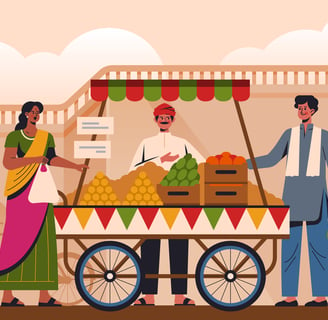Our History Of Exports- How India has always the ace Exporter to the World!
Welcome to Pinaak Global Exporters Institute, your trusted partner in mastering international export. India’s Glorious History as a Global Export Powerhouse India has been a dominant player in global trade for centuries, renowned for its rich resources, craftsmanship, and strategic location. From the ancient spice routes to modern technology exports, India has continuously shaped global commerce.
2/7/20252 min read


1. Ancient India – The Birthplace of Global Trade
Indus Valley Civilization (3000 BCE – 1500 BCE)
India’s earliest known trade networks connected the subcontinent to Mesopotamia, Egypt, and Persia.
Key exports: Cotton, beads, pottery, and precious stones.
Maritime Silk Route & Spice Trade (1000 BCE – 1500 CE)
India was the world’s largest supplier of spices, silk, and textiles to Rome, China, and the Middle East.
Ports like Lothal, Tamralipti, and Muziris thrived as global trade centers.
The Golden Age of Indian Exports (Gupta & Chola Dynasties)
The Chola dynasty (9th–13th century) established strong maritime trade links with Southeast Asia, exporting textiles, spices, and gems.
Indian knowledge (mathematics, astronomy) also became a valuable export to the Arab world.
2. The Mughal Era – India as the World’s Economic Superpower
16th–18th Century: 25% of World GDP
Under the Mughals, India accounted for nearly a quarter of the world’s economy.
Key exports: Fine muslin from Bengal, carpets, jewelry, spices, and steel (Wootz steel was used to make Damascus swords).
Europe’s Obsession with Indian Goods
The British, Dutch, Portuguese, and French set up trading companies in India, eager to access its textiles and spices.
India’s famed cotton and silk were in high demand across Europe.
3. The Colonial Period – From an Exporter to a Supplier
British Exploitation (1757–1947)
The British East India Company transformed India from an independent trading powerhouse into a supplier of raw materials.
Finished goods like textiles were banned in Britain to protect its own industries, leading to the decline of India’s textile dominance.
4. Post-Independence – The Rebirth of Indian Exports
1950s–1980s: Self-Reliance & Limited Trade
India initially focused on self-sufficiency, limiting exports.
Key exports: Tea, spices, handicrafts, and minerals.
1991 Economic Reforms – The Export Boom
Liberalization opened up the economy, boosting exports in IT, pharmaceuticals, and manufacturing.
India became a global leader in software services, gems, and textiles.
5. Today & The Future – India’s Export Renaissance
Current Leading Exports:
IT & Software Services – Over $200 billion annually.
Pharmaceuticals – India is the “Pharmacy of the World”.
Automobiles & Engineering Goods – India exports to over 150 countries.
Agriculture – Rice, spices, and tea continue to dominate global markets.
Renewable Energy & Green Tech – Solar panels and green hydrogen exports are rising.
India’s Vision:
The government aims for $1 trillion in exports by 2030.
Expanding trade agreements and improving manufacturing competitiveness.
From ancient trade routes to modern technology exports, India has always been an ace exporter. With a mix of historical strengths and future-ready industries, India is once again reclaiming its position as a global trade leader.
Would you like a deep dive into any specific era or sector? 🚢📦📈


